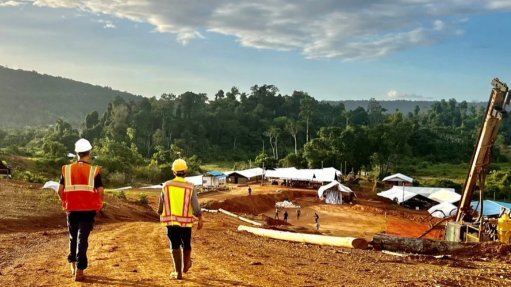Renewables, clean energy technologies limit carbon emissions amid global energy crisis
Global energy-related carbon dioxide (CO2) emissions increased by less than 1% in 2022, according to new analysis published by the International Energy Agency (IEA).
The ‘CO2 Emissions in 2022’ report, the first in a new series called the ‘Global Energy Transitions Stocktake’, shows that emissions grew by 0.9%, or 321-million tonnes, reaching a new high of over 36.8-billion tonnes.
The rise in emissions was significantly slower than global economic growth of 3.2%, signalling a return to a decade-long trend that was interrupted in 2021 by the rapid and emissions- intensive economic rebound from the Covid-19 pandemic.
The report shows that the growth of solar, wind, electric vehicles (EVs), heat pumps and energy efficiency helped limit the impacts of increased use of coal and oil amid the global energy crisis.
Extreme weather events, including droughts and heatwaves, as well as an unusually large number of nuclear power plants being offline, contributed to the rise in emissions. But an additional 550-million tonnes of emissions were avoided by increased deployment of clean energy technologies.
“The impacts of the energy crisis didn’t result in the major increase in global emissions that was initially feared – and this is thanks to the outstanding growth of renewables, EVs, heat pumps and energy efficient technologies. Without clean energy, the growth in CO2 emissions would have been nearly three times as high,” IEA executive director Fatih Birol says.
He notes that, nonetheless, emissions from fossil fuels continued to grow, hindering efforts to meet the world’s climate targets.
“International and national fossil fuel companies are making record revenues and need to take their share of responsibility, in line with their public pledges to meet climate goals. It’s critical that they review their strategies to make sure they’re aligned with meaningful emissions reductions,” Birol says.
CO2 emissions from coal grew by 1.6% as the global energy crisis continued to spur a wave of gas-to-coal switching in Asia, and to a lesser degree in Europe. While the increase in coal emissions was only about one-quarter of 2021’s rise, it still far exceeded the last decade’s average growth rate.
The increase in emissions from coal more than offset the 1.6% decline in emissions from natural gas as supply continued to tighten following Russia’s invasion of Ukraine and as European businesses and citizens responded with efforts to cut their gas use.
CO2 emissions from oil grew even more than those from coal, increasing by 2.5% year-on-year but still remaining below prepandemic levels. About half of the year-on-year increase in oil’s emissions came from aviation as air travel continued to rebound from pandemic-related lows.
China’s emissions were broadly flat in 2022 as strict Covid-19 measures and declining construction activity led to weaker economic growth and reductions in industrial and transport emissions.
The European Union’s emissions fell by 2.5%, thanks to record deployment of renewables helping to ensure the use of coal was not as high as some observers had expected. A mild start to the European winter and energy saving measures in response to Russia’s invasion of Ukraine also contributed.
In the US, emissions grew by 0.8% as buildings increased their energy consumption to cope with extreme temperatures.
Excluding China, emissions from Asia’s emerging and developing economies increased by 4.2%, reflecting their rapid economic and energy demand growth.
The report highlights that, although the rise in emissions last year was far smaller than the exceptional jump of over 6% in 2021, emissions still remain on an unsustainable growth trajectory. It calls for stronger action to accelerate the clean energy transition and move the world onto a path towards meeting its energy and climate goals.
The report covers CO2 emissions from all energy combustion and industrial processes, as well as information on methane and nitrous oxide emissions, providing a complete picture of energy-related greenhouse-gas emissions in 2022.
Comments
Press Office
Announcements
What's On
Subscribe to improve your user experience...
Option 1 (equivalent of R125 a month):
Receive a weekly copy of Creamer Media's Engineering News & Mining Weekly magazine
(print copy for those in South Africa and e-magazine for those outside of South Africa)
Receive daily email newsletters
Access to full search results
Access archive of magazine back copies
Access to Projects in Progress
Access to ONE Research Report of your choice in PDF format
Option 2 (equivalent of R375 a month):
All benefits from Option 1
PLUS
Access to Creamer Media's Research Channel Africa for ALL Research Reports, in PDF format, on various industrial and mining sectors
including Electricity; Water; Energy Transition; Hydrogen; Roads, Rail and Ports; Coal; Gold; Platinum; Battery Metals; etc.
Already a subscriber?
Forgotten your password?
Receive weekly copy of Creamer Media's Engineering News & Mining Weekly magazine (print copy for those in South Africa and e-magazine for those outside of South Africa)
➕
Recieve daily email newsletters
➕
Access to full search results
➕
Access archive of magazine back copies
➕
Access to Projects in Progress
➕
Access to ONE Research Report of your choice in PDF format
RESEARCH CHANNEL AFRICA
R4500 (equivalent of R375 a month)
SUBSCRIBEAll benefits from Option 1
➕
Access to Creamer Media's Research Channel Africa for ALL Research Reports on various industrial and mining sectors, in PDF format, including on:
Electricity
➕
Water
➕
Energy Transition
➕
Hydrogen
➕
Roads, Rail and Ports
➕
Coal
➕
Gold
➕
Platinum
➕
Battery Metals
➕
etc.
Receive all benefits from Option 1 or Option 2 delivered to numerous people at your company
➕
Multiple User names and Passwords for simultaneous log-ins
➕
Intranet integration access to all in your organisation





















